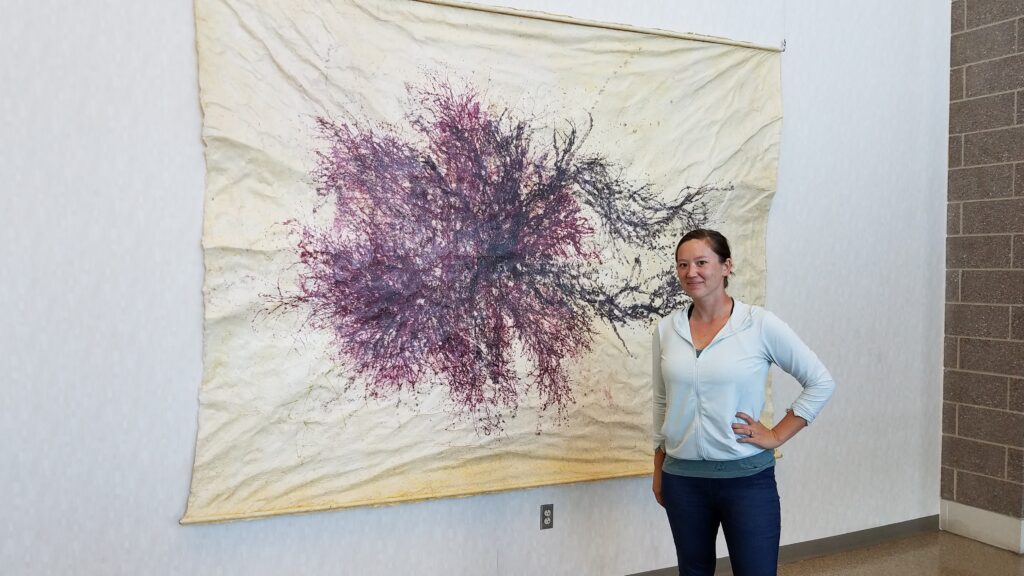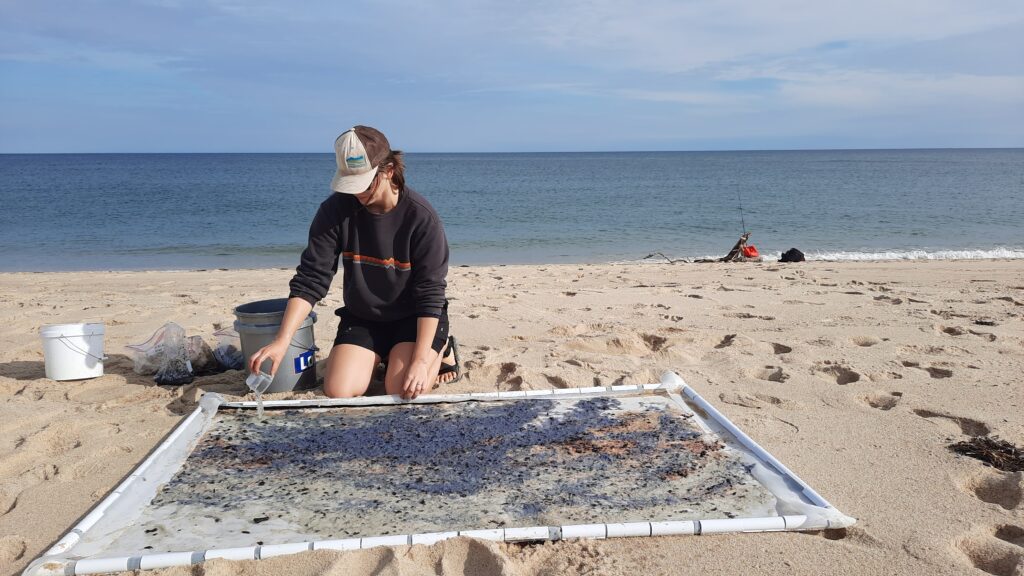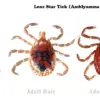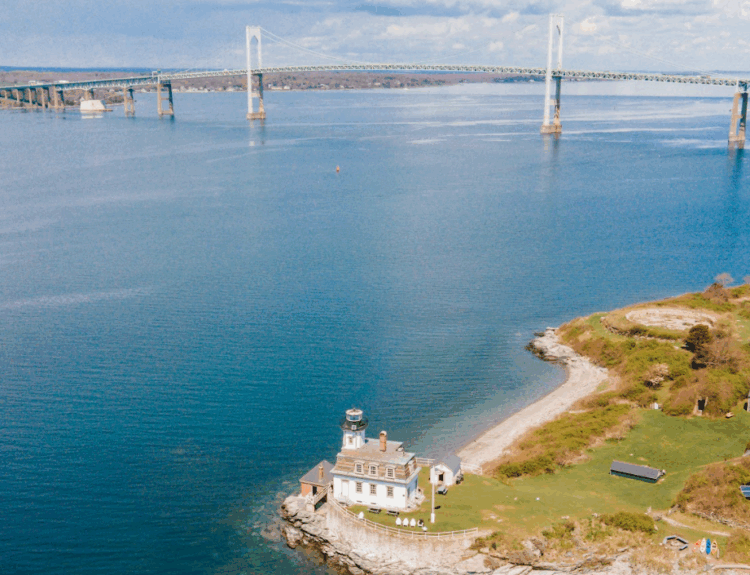
‘Somewhere along the way, people have lost a connection to the planet’s living systems. The reality is that we are not separate from the world but are all native to the Earth and interconnected in more ways than we know.’
As soon as we read about your work in Motif, we wanted to learn more. For those who might not be aware of your work, please give us an overview.
Well, I’m an interdisciplinary artist based in Rhode Island whose work is rooted in hand papermaking and place. My artwork reconnects people to the voice of the land and waters, transforming plant fibers, seaweed, sediment, and site materials into expansive installations, organic sculptures, analog photos and prints on paper, and textured pulp paintings.
You told the magazine that “through my work, I can create this cultural connection with nature and the places around us.” Can you expand on that?
Somewhere along the way, people have lost a connection to the planet’s living systems. The reality is that we are not separate from the world but are all native to the Earth and interconnected in more ways than we know. As a papermaking artist, I have the daily privilege of working with natural materials. For example: I turn linen cloth, that was once a flax plant, into paper pulp; I visit rocky shorelines and paddle salt ponds, collecting seaweed samples; I become familiar with things like springtime green sea lettuce, and winter rockweed that stains paper an orange-brown; and water, seaweed, flotsam, and plant pulps combine in my works. Through my artistic processes, I engage with the living waterways and ecologies. The outcome is artworks that can also bring the living planet into your everyday life. I think that in order to love and care for something, you have to get to know it.
OK, let’s get into some details. What materials do you use in your creations and where do you find them?
I responsibly collect plants, seaweeds, sediment, and water samples as material for art-making. I find many of these along shoreline sites, and other places that draw my interest. Sometimes, people know that I work with plant fibers for papermaking, so they give me those. I’ve also collaborated with community gardens, different farms, National Parks and Forests, and watershed councils to get fibers. Many of these plants and seaweeds are something labeled “invasive,” meaning they originate from someplace else usually, and cause economic or environmental harm. There is usually a lot of one species in one place, and people are happy they are being made of some use. I also use hand papermaking fibers such as linen rags, cotton, and abaca (a type of plant related to banana trees).

What goes through your head when you are outside in nature?
Actually, when I am outside in nature I try to stay out of my head. I try to pay attention, look and listen to what is around me. I try to stay curious! It can be endlessly interesting once you pause long enough. I love looking at what plants or seaweeds are in a certain place, what plant communities are coexisting, land forms, built structures or remnants of them, and the way the water moves through a landscape.
And when you are on the shore collecting materials, you surely also find detritus: plastic and other toxic pollutants that threaten the environment. What is your message regarding those?
Oh yeah, there is always those signs of disturbance, at most places you look. Did you know that the Blackstone River (which goes through northern Rhode Island and Pawtucket) used to be the most polluted river in the United States in the 1990s?! If I had one ask: “Stop putting fertilizers, herbicides, and pesticides on your lawns. Those pollute your local waterways.”
Amen to that. Where have your creations been publicly displayed?
In many locations over the years. In Rhode Island, my works have been displayed at places such as Rhode Island T.F. Green International Airport, Providence City Hall, the State House, and the Granoff Center at Brown University. I also wheat-pasted large circular artworks onto different buildings in downtown Pawtucket.
Tell us about Paperslurry.com and the Paperslurry Weekly newsletter.
I started Paperslurry in 2012 when I was first starting to use hand papermaking as an artistic medium. There was very little on the internet about things like ‘pulp paintings.’ You had to join a Yahoo Group and search the messages, or ask the forum to get any information. So I started blogging about artistic papermaking as I learned and grew into my art career. In 2022 I started Paperslurry Weekly, a free email newsletter that helps other creatives become papermaking artists. You can join for free, and then receive VIP invitations to join my comprehensive, online artistic papermaking courses. Right now I’m running a Beta round of my first one, called “The Ultimate Papermaking School for Artists,” and I have several more courses planned. My students are from all over the world, and many of them simply don’t have anywhere close to them to learn artistic papermaking.
We always ask about background. When did you first know you wanted to be an artist?
I was always drawing and painting as a child. When I went to UConn, I first thought I wanted to be an art history major, but pretty much in the first semester I did all the studio classes I needed do to. I wanted more, and I knew that this was what I wanted to do.
Was environmental art a passion from the start or did that come later?
Eco-centric art came later. I didn’t plan on this being a focus of my work. In graduate school at Louisiana State University in Baton Rouge, I started observing local sites and landscapes. I did drawings and research into the history of built structures, hydrologies, and more. As I looked, it was impossible to ignore the degradation at different sites—whether that was evidence of development and disturbance on local ecologies, pollutants in water ways, or evidence of the climate catastrophe. Being a papermaker meant that I could directly engage with site materials, to have things like plant fibers bring context and content to my artwork.
Did you have any mentors along the way?
Definitely, I had so many professors in painting and printmaking that helped me along the way to develop my own artistic voice. Between my BFA and MFA, I had 7 years of art schooling! I also had a wonderful art teacher, Mr. Daigle, who was my elementary school art teacher, and then high school art teacher, who has always been supportive and encouraging.
So what’s next for May Babcock?
I’d like to return to making paper at specific sites. I did a poured paper cast of the Mississippi River levee in 2011, and am thinking about that work again lately. So the other year during an artist residency (at the Dune Shacks in Provincetown with the Peaked Hill Trust and Cape Cod National Seashore), I brought a big paper mould to the beach, and captured impressions of wave action using natural fibers, seaweed, and colors. I’m working on a new paper mould that I can float in waterways, and make paper on site.

Do you have a favorite season?
Probably fall time. It’s the season for collecting a lot of papermaking fibers, so I usually spend a week processing them and drying them for storage, so that they are ready to use over the winter months.
What advice do you have for people who are concerned about climate change and want solutions?
I fluctuate on what could be a solution. Sometimes the answer is doing less. We often think that solutions mean doing more and more things, but you have to let things rest to heal. The dominant culture is one of busy-ness and endless growth at the expense of the Earth. Other times, I think that everyone needs to start gardening, in ways that help ourselves, plant life, wildlife, the soil, the watershed, the air, etc. I also believe in the power of the arts. They reflect back on how we live in the world. And if we need new stories, and new ways of being in the world, then arts and culture have power to invite communities to live well with places.
Where can people buy your work?
There are a couple of pieces people can collect available on my website at maybabcock.com. Beyond that, I hold art sales a couple times a year. If you sign up for my email list at maybabcock.com, you’ll be in the loop.






